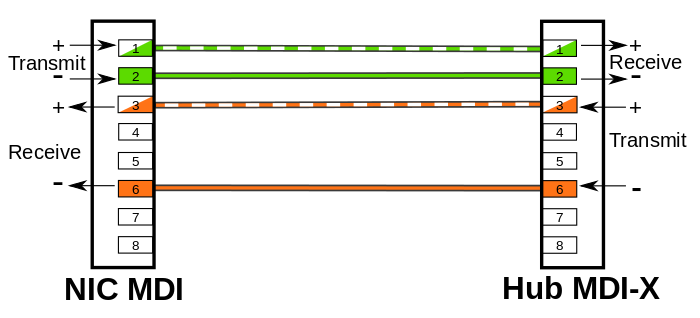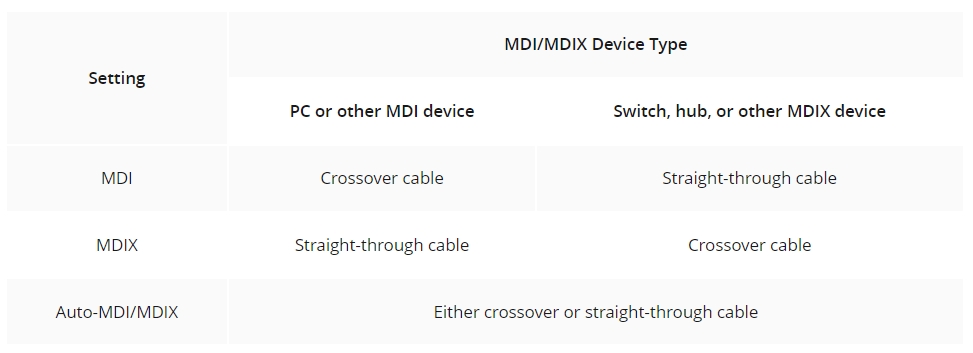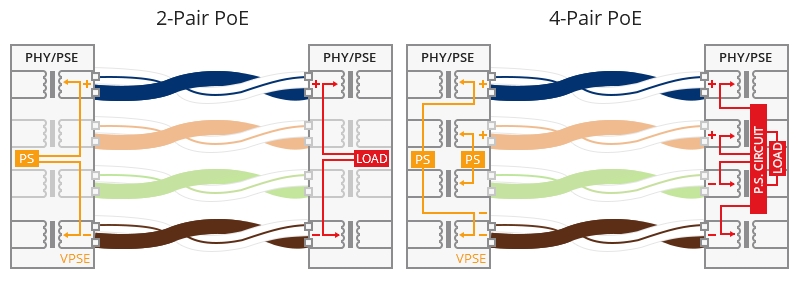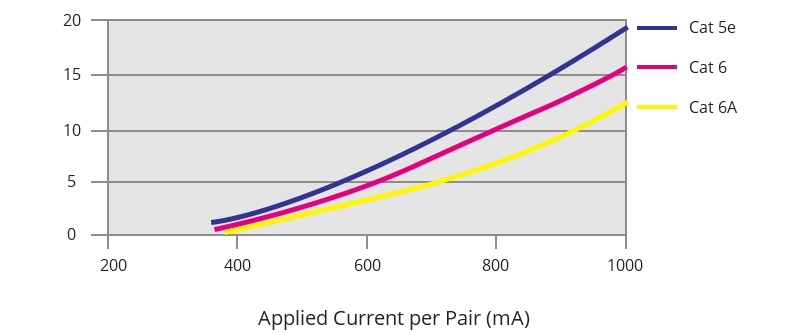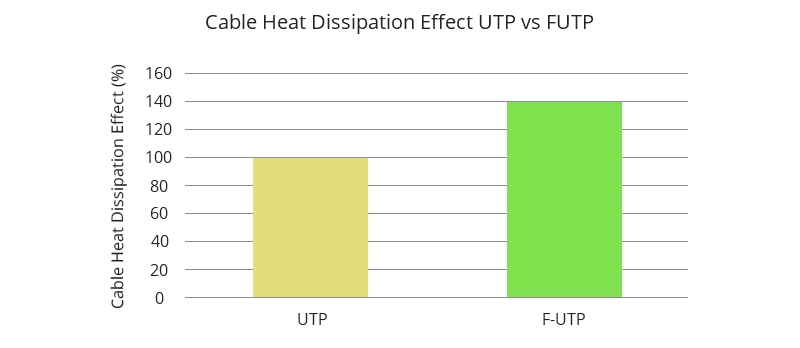PoE switch is designed to offer both network connection and power supply to one PoE powered device (PD) through one Ethernet cable. And as the demand for deploying PD devices such as IP phones, IP cameras and access points increases, PoE switch is commonly used in today’s enterprise and campus networks for it helps to reduce deployment complexity and cost. Now we can see there are both active PoE switch and passive PoE switch sold in the market. What exactly are they? Should we use active PoE or passive PoE switches for our network?
What Are Active PoE and Active PoE Switch?
Active PoE, short for active Power over Ethernet, is also known as standard PoE which refers to any type of PoE that negotiates the proper voltage between the power supply equipment (PSE) and the PD device. An active PoE switch is a device that complies with standard PoE, so it is also named a standard PoE switch. This type of switch is rated to be IEEE 802.3af, IEEE 802.3at or IEEE 802.3bt compliant. Thus it can be further divided into PoE, PoE+ and PoE++ switches (PoE vs PoE+ vs PoE++ Switch: How to Choose?). Before powering up, the active PoE switch will test and check to ensure the electrical power is compatible between the switch and the remote device. If it isn’t, the active PoE switch will not deliver power, preventing any potential damage to the non-PoE device.
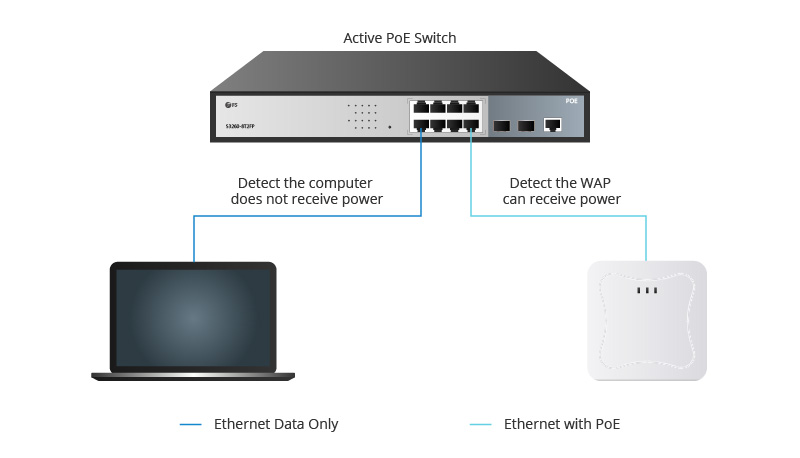
What Are Passive PoE and Passive PoE Switch?
Passive PoE, also known as the passive Power over Ethernet, is a non-standard PoE. It can also deliver power over the Ethernet lines, but without the negotiation or communication process. The passive PoE switch does not adhere to any IEEE standard. The power is “always-on” when using a passive PoE switch in networks, which means it always sends electric current out over the Ethernet cable at a certain voltage regardless of whether the terminal device supports PoE or not. So using passive PoE switch may burn out the terminal devices if they’re not prepared for electrified Ethernet cables.
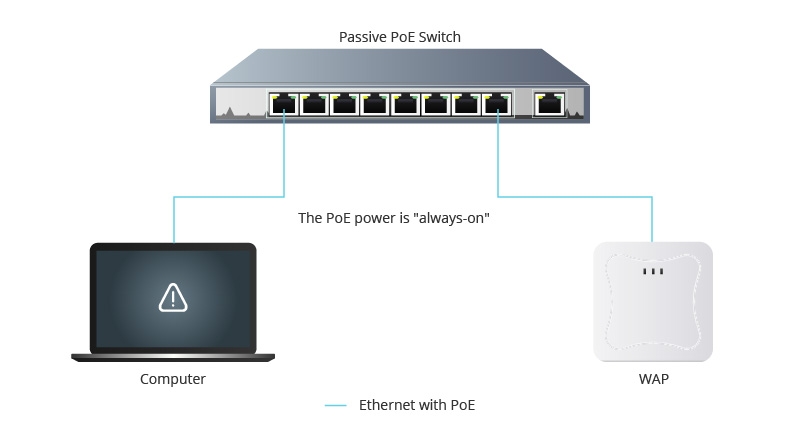
Active vs. Passive PoE Switch: What Are Their Differences?
As mentioned above, active PoE switches and passive PoE switches can both provide PoE connections but in very different ways. Besides that, they also differ in PoE power supply pinout, Ethernet support, cost, etc.
Active vs. Passive PoE Switch: PoE Power Supply Pinout
As we know, there are three methods for PoE switches to supply power: PoE Mode A, PoE Mode B and 4-pair PoE. In PoE Mode A, power is delivered simultaneously with data over pins 1, 2, 3, and 6. In PoE Mode B, power is injected onto pins 4, 5, 7, and 8. And 4-pair PoE delivers power over all 8 pins simultaneously. Active PoE switch can support all PoE Mode A, PoE Mode B and 4-pair PoE, while passive PoE switch can only support PoE Mode B. For more details about PoE Mode A, PoE Mode B and 4-pair PoE, you can check: How Does PoE Switch Deliver Power for Your Devices?
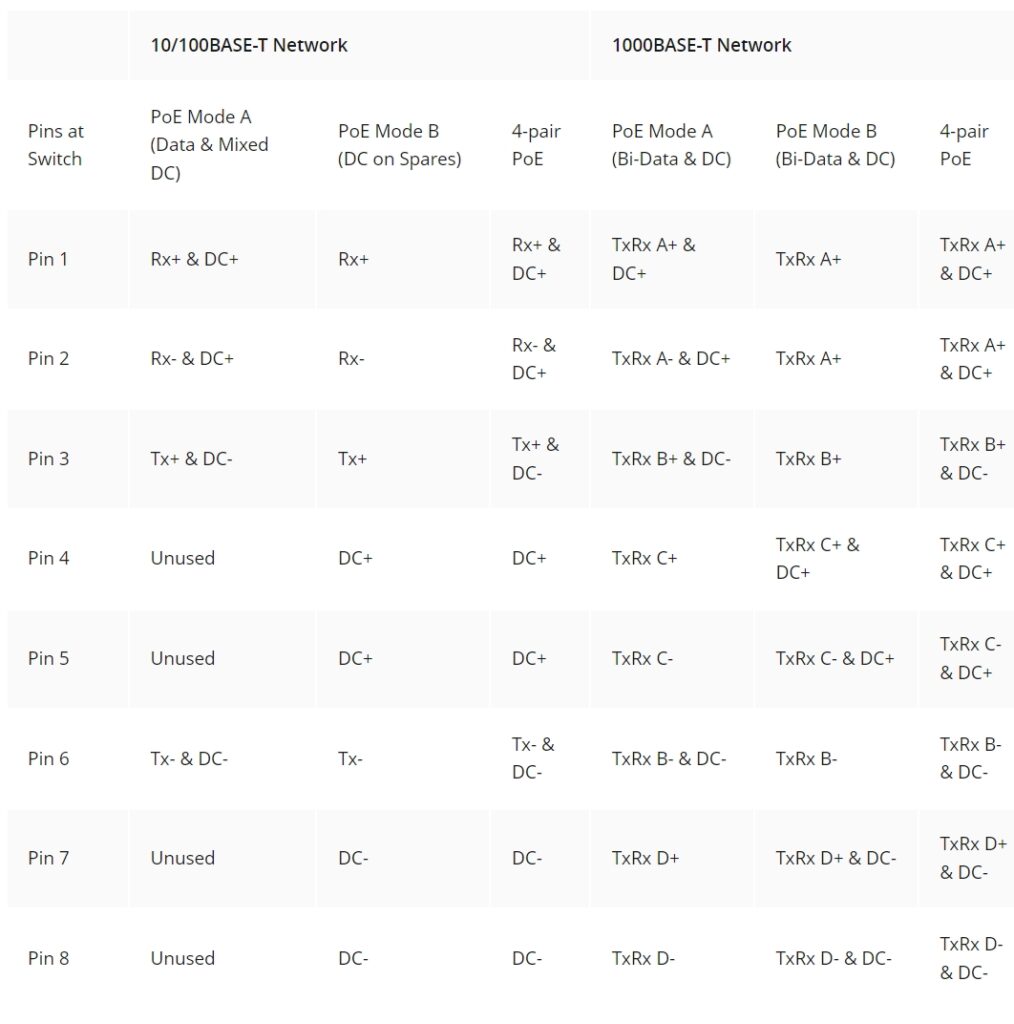
Active vs. Passive PoE Switch: Ethernet Support
Active PoE switches can support 10/100/1000Mbps Ethernet up to 100m over Cat5/5e/6 cable. Passive PoE switches, however, commonly support 10/100 Mbps Ethernet up to 100m. Thus active PoE switches can be applied in both traditional 10/100BASE-T and modern 1000BASE-T PoE networks. While passive PoE switches are usually used in the past 10BASE-T and 100BASE-T PoE networks.
Active vs. Passive PoE Switch: Cost
All active PoE switches are equipped with the built-in PoE power controller which performs the function of PD device detection and classification. While the passive PoE switch has no such component and function. Therefore it is reasonable to see the price of the active PoE switch is higher than that of the passive PoE switch.
To sum up, active and passive PoE switches mainly differ from each other in the following aspects:
| Active PoE Switch | Passive PoE Switch | |
|---|---|---|
| Standard | IEEE 802.3af/at/bt | N/A |
| Power Injection | After Negotiation | Immediately |
| Power Supply Mode | PoE Mode A/PoE Mode B/4-Pair PoE | PoE Mode B |
| Ethernet Support | 10/100/1000BASE-T | 10/100BASE-T |
| Max. Distance | 100m | 100m |
| Safety | High | Low |
| Cost | Medium | Low |
Active vs. Passive PoE Switch: Which to Choose?
From the above content, we can say that for safety concerns, active PoE switches should always be our top choice for powering up remote IP phones, IP cameras, wireless access points, and other PD devices. However, you may also consider passive PoE switches if there is a tight budget. But remember that the passive PoE switch has no power detection function. So it is important to make sure the passive PoE switch you buy matches the power specifications exactly to the PD device you are trying to power on. Otherwise, you can easily burn up your PD device. In addition, you should never connect computers and other non-PoE devices to the passive PoE switch.
Related Article:
Powering PoE Switch From A PoE Switch: Is It Possible?
PoE Switch vs. PoE Injector: Which One to Choose?
Article Source: Active vs. Passive PoE Switch: Which Should We Choose?




